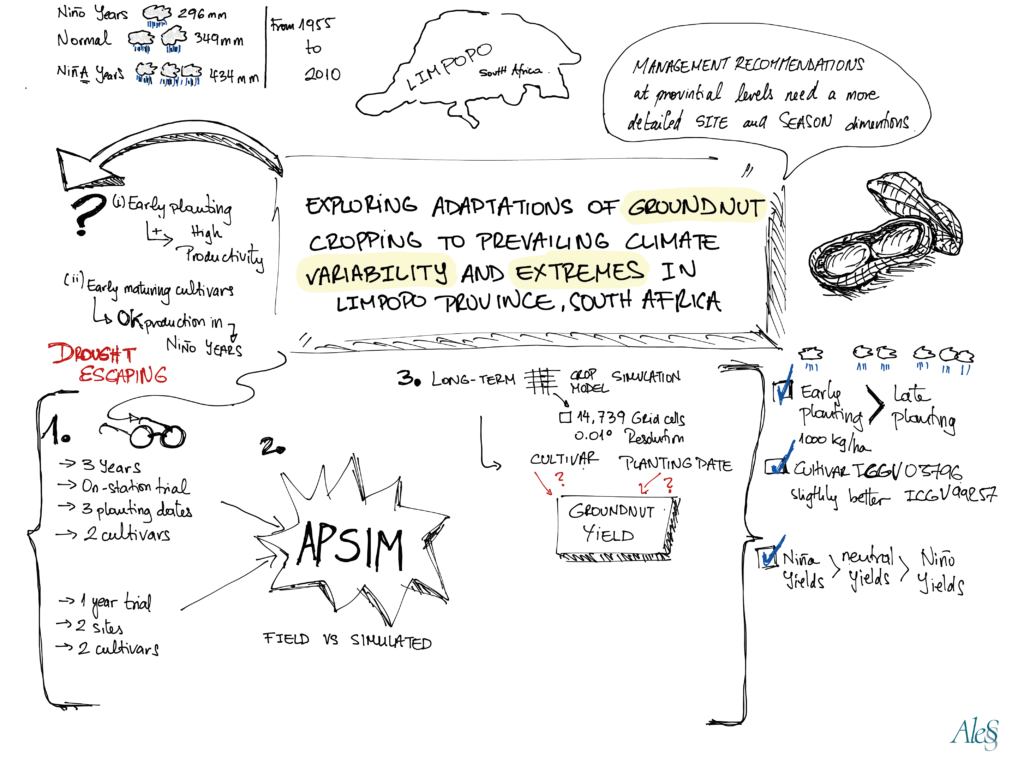Exploring adaptations of groundnut cropping to prevailing climate variability and extremes in Limpopo Province, South Africa

Abstract
Adapting groundnut production to the high climatic variability and extremes prevailing in Limpopo (South Africa) requires season- and site-specific exploitation of genotype x environment x management interactions. Notably, the El Niño-Southern Oscillation phenomenon (ENSO) causes distinctive seasonal rainfall anomalies in the province: Weather records over the period 1955–2010, showed El Niño years with an average of 296 mm growing season rainfall, neutral years with 349 mm and La Niña with 434 mm. We hypothesized that (i) early planting date is crucial for ensuring high productivity of groundnut and (ii) early maturing cultivars can ensure satisfactory production even in El Niño years, both options aiming at escaping prolonged periods of drought. To evaluate our hypotheses, we conducted a three year on-station trial with three planting dates and two cultivars, a one year trial at two sites comparing the two cultivars, tested crop model APSIM against field trial data, and, finally, performed long-term gridded crop model simulation runs for all cultivated land (i.e. 14,739 grid cells at a resolution 0.01°) in Limpopo exploring the effect of the cultivars and planting dates on groundnut yield. Field trials showed that early planting was superior to later plantings, irrespective of the weather year. Even in the very dry El Niño year 2016, yields of more than 1000 kg/ha were achieved with early planting, while planting later was not possible due to severe soil water deficits. Cultivar ICGV 03796 performed slightly better than ICGV 99257 due to faster ground cover closure, but no difference in phenology was observed. After evaluation of the model against the field trial data was found satisfactory, APSIM simulations showed that highest yields were achieved in La Niña years (median 996 kg/ha across all grids) and smallest in El Niño years (654 kg/ha across all grids). However, as in the field trials, we observed on average over all grid cells higher grain yields for early planting for all weather years as effective rainfall captured was higher than for later plantings. Longer growth duration by cultivar ICGV 03796 appeared to be more productive than an earlier maturing cultivar that we added into the simulation analysis as a third cultivar. However, a closer look at the spatial pattern of the simulation analysis revealed that for the generally drier regions of Limpopo, this cultivar with shorter growth duration would indeed be more productive in El Niño years. It showed that such season-specific adaptation would increase yields only by 2.9% for Limpopo province in total, but yield gains of more than 10% could be obtained for 11.3% of the grid cells in El Niño years. Hence, this study demonstrated that management recommendations at provincial scale explicitly need to consider in more detail a site- and season-specific approach.